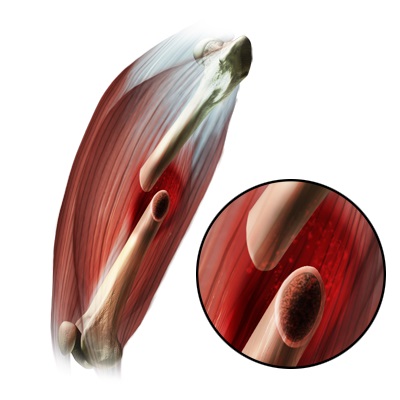Fracture

Road accidents such as getting hit by a car can result in the fracturing of the bones. The most common bones to fracture from trauma include the pelvis, humerus, and femur. Diseases such as infection and cancer can also result in bone fracture. A fractured limb can not bear the weight of the body so the loss of bearing weight, bruising, and pain is an indication of bone fracture. Diagnosing a fractured bone requires a physical examination and taking radiograph images of the affected area. Most of the fractures in canines and felines are repaired surgically instead of by cast placement due to the shape of the limb, size, and tolerance of the patient. The surgical procedure for repairing a fractured bone includes the use of pins, screws, and plates to relocate the bone to its normal position. Complications in the process are rare and occur only when the patient is too active in the healing phase. Being too active in the healing process delays the healing so post-operative care includes rest for a proper and speedy recovery. The progress of healing is monitored by taking x-rays in scheduled follow-up visits with your vet. After proper healing of the bone, your pet can continue its activities.
